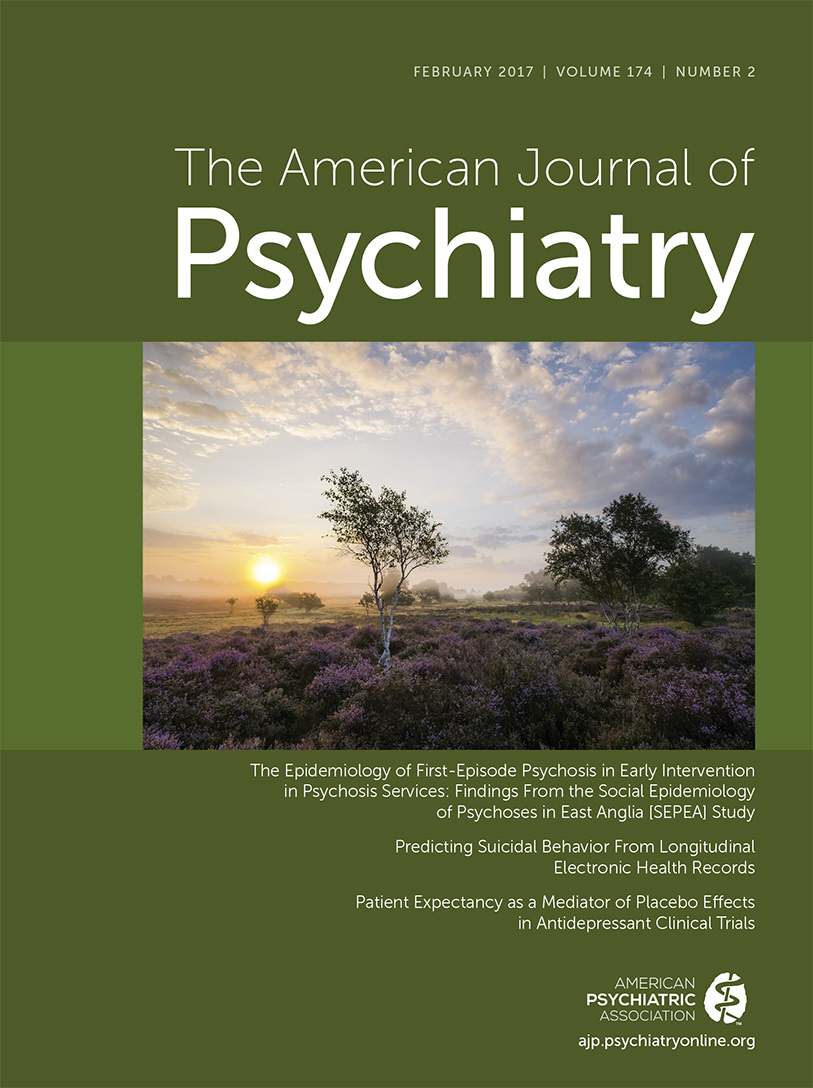Familial Confounding of the Association Between Maternal Smoking During Pregnancy and Schizophrenia
To the Editor: In the August 2016 issue of the Journal, Niemelä et al. (1) reported a 38% increased odds of schizophrenia in offspring exposed to maternal smoking during pregnancy. This is problematic because smoking during pregnancy and schizophrenia are both heritable phenotypes, and recent research suggests a genetic overlap between schizophrenia and smoking, indicating that unmeasured familial confounding may explain at least part of the observed association.
We conducted a nationwide cohort study including 734,284 individuals born in Denmark between 1991 and 2002 to examine the putative effect of maternal smoking on the risk of schizophrenia using family-based designs. During the study period, 2,769 individuals were assigned a schizophrenia spectrum diagnosis (ICD-10 codes F20–F29). Information on maternal smoking reported at the first antenatal visit (13–15 weeks of gestation) was derived from the Danish Medical Birth Register (2).
At the entire population level, we observed a significantly increased risk of schizophrenia in offspring exposed to maternal smoking during pregnancy, even after adjusting for a variety of covariates (gender, calendar year, mother’s parity, parental age at childbirth, parental psychiatric history, parental highest education at time of birth, and parental income at time of birth). The hazard ratio was 1.33 and thereby highly comparable to the risk observed in the study by Niemelä et al. (1). However, after accounting for the woman’s tendency to smoke during all her pregnancies, as recommended by Begg and Parides (3), the hazard ratio was 1.21, which was markedly reduced and no longer statistically significant. Furthermore, siblings within the same family, who were differentially exposed to maternal smoking during pregnancy, did not differ in their risk to develop schizophrenia (Table 1).
| Individual Maternal Smoking During Pregnancya | Individual and Familial Maternal Smoking During Pregnancyb | Differentially Exposed Siblingsc | ||||
|---|---|---|---|---|---|---|
| Exposure | Hazard Ratio | 95% CI | Hazard Ratio | 95% CI | Hazard Ratio | 95% CI |
| Individual-level effect of maternal smoking during pregnancy | 1.33 | 1.23–1.45 | 1.21 | 0.96–1.52 | 1.16 | 0.64–2.09 |
| Familial-level effect of maternal smoking during pregnancy | 1.40 | 1.25–1.57 | ||||
TABLE 1. Maternal Smoking During Pregnancy and Risk of Schizophrenia in Offspring
The Danish results strongly suggest that unmeasured genetic factors or shared familial environment are likely to account for the increased risk of schizophrenia among offspring exposed to maternal smoking. Although smoking during pregnancy is known to be harmful in many ways (e.g., low birth weight and infant mortality), and pregnant women should still be encouraged to stop smoking, maternal smoking during pregnancy seems not to be an independent risk factor for schizophrenia.
1 : Prenatal nicotine exposure and risk of schizophrenia among offspring in a national birth cohort. Am J Psychiatry 2016; 173:799–806Link, Google Scholar
2 : The Danish Medical Birth Registry. Dan Med Bull 1998; 45:320–323Medline, Google Scholar
3 : Separation of individual-level and cluster-level covariate effects in regression analysis of correlated data. Stat Med 2003; 22:2591–2602Crossref, Medline, Google Scholar



